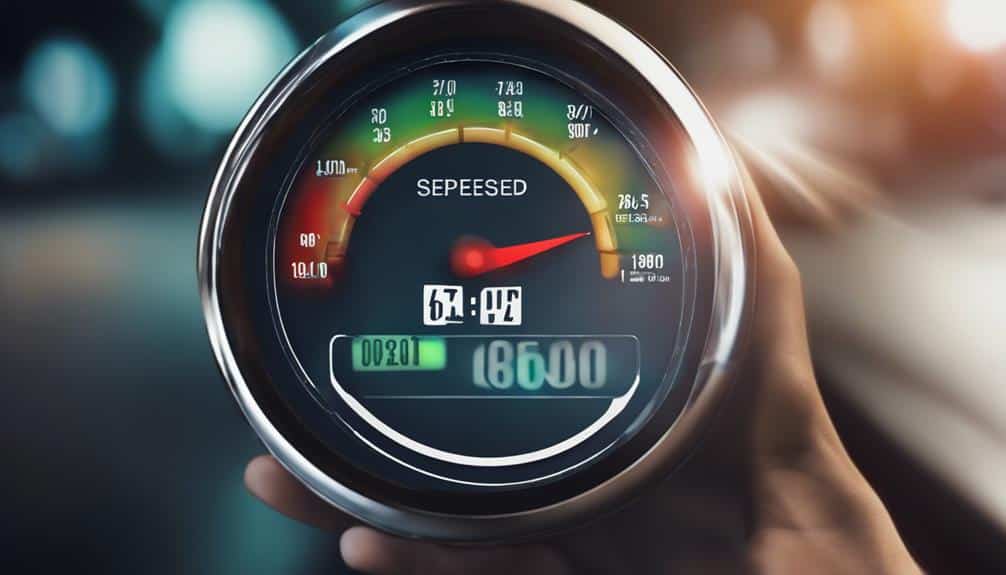Mastering technical SEO is crucial for enhancing your website's search engine visibility and user satisfaction. By focusing on aspects like structured data, XML sitemaps, internal linking, canonical tags, and optimized site structure, you can greatly improve your site's performance. Implementing strategies to enhance site structure, navigation, crawling, rendering, indexing, resolving thin and duplicate content issues, and optimizing page speed will pave the way for a successful SEO strategy. Understanding these fundamentals will set a strong foundation for your website's SEO efforts.
Key Takeaways
- Structured data enhances website visibility.
- Consistent URL structure aids understanding.
- Rectifying crawl errors is crucial.
- Thin content provides little value.
- Page load times impact user experience.
Technical SEO Fundamentals

In understanding the foundations of Technical SEO, it becomes clear how essential its role is in optimizing website performance for search engines. Technical SEO involves various key elements that contribute to enhancing a website's visibility on search engines like Google. One important aspect is the utilization of structured data, which helps search engines comprehend the content on a website better, leading to rich results displayed in search engine results pages. Implementing an XML sitemap is also fundamental as it acts as a roadmap for search engine crawlers to navigate through the website efficiently, ensuring all relevant pages are indexed.
Internal linking is another essential component of Technical SEO, as it establishes a hierarchy within the website, distributes link equity, and enables easier navigation for both users and search engine bots. Canonical tags play a crucial role in resolving duplicate content issues by specifying the preferred version of a webpage to be indexed. These elements collectively contribute to the overall site structure optimization, laying a strong foundation for improved search engine performance and user experience.
Site Structure and Navigation
A well-organized site structure and intuitive navigation are crucial for enhancing both user experience and search engine visibility. Consistent URL structure not only helps users in understanding the website hierarchy but also assists search engines in crawling and indexing the site efficiently. Breadcrumbs navigation, which displays users the path from the homepage to the current page, improves site architecture and helps both users and search engines navigate the site effectively.
Implementing a flat and organized site structure simplifies technical SEO tasks and guarantees that search engines can easily discover and index the site's content. This streamlined structure also impacts the usage of URLs, sitemaps, and robots.txt for better SEO optimization. A strong site structure is essential for improving user experience by providing clear navigation paths and enhancing the visibility of the site on search engines. By focusing on site architecture and navigation, websites can greatly enhance their overall technical SEO performance.
Crawling, Rendering and Indexing

Efficient crawling, rendering, and indexing are fundamental components of technical SEO that have a significant impact on a website's search visibility and organic rankings. Identifying and rectifying crawl errors is important to make sure that website pages are properly indexed by search engines. Implementing strategic internal linking, especially to deep pages, can aid in the effective indexing of content by search engine bots. Utilizing XML sitemaps is an essential practice as they assist Google in discovering and indexing various URLs on a website. Google Search Console's Inspect feature serves as a valuable tool for diagnosing and resolving indexing issues promptly. Prioritizing the optimization of crawlability, rendering, and indexing processes is crucial for enhancing search visibility and organic rankings. By focusing on these aspects, websites can improve their overall presence in search engine results pages and attract more organic traffic.
Thin and Duplicate Content
Exploring the world of technical SEO, one encounters the essential issue of Thin and Duplicate Content, which can profoundly impact a website's search engine rankings and user experience. Thin content provides little value to users and search engines, leading to penalties and decreased search visibility. On the other hand, duplicate content poses a significant problem by confusing search engines and overshadowing original content, diminishing its visibility. To address these challenges, it is vital to adhere to SEO Best Practices by creating unique, valuable, and original content. Implementing canonical tags can also help mitigate the duplicate content problem by specifying the preferred version of a webpage. Failure to address thin and duplicate content issues not only affects search engine rankings but also hampers user experience, ultimately hindering a website's performance in search results. Focusing on producing high-quality content and resolving thin content penalties is imperative in the world of new technical SEO.
PageSpeed

Improving website performance through ideal PageSpeed is essential for engaging and retaining online visitors in today's digital landscape. Page load times have a substantial impact on user experience, with studies showing that 53% of mobile visitors leave a site if it takes more than 3 seconds to load. Search engines like Google prioritize faster loading times as they lead to enhanced user satisfaction. Tools such as Google PageSpeed Insights can help analyze and optimize site speed by providing suggestions on how to improve performance.
Optimizing images, minifying CSS, and minifying JavaScript files are effective techniques to enhance page load speed. By reducing the size of these elements, websites can load faster, creating a smoother user experience. Mobile optimization is also critical for achieving fast page loading times, considering the increasing number of users accessing the internet via mobile devices. Incorporating these practices into technical SEO strategies can lead to better rankings on search engines and increased user engagement.
Extra Technical SEO Tips
To further enhance the technical aspects of SEO beyond PageSpeed optimization, additional strategies can be implemented to boost website performance and search engine visibility. Implementing structured data markup can provide search engines with detailed information, potentially enhancing search results. Regularly monitoring and fixing dead links is essential for maintaining a positive user experience and optimizing SEO performance. Utilizing SEO tools to identify and address duplicate content issues can prevent confusion for search engines and improve ranking potential.
Ensuring a secure website through HTTPS implementation and an SSL certificate can lead to ranking benefits, particularly with Google's preference for secure sites. Proper implementation of hreflang tags is vital to avoid duplicate content problems and effectively target multiple regions. Additionally, optimizing internal links for search engines to crawl efficiently can further enhance SEO performance and visibility. By incorporating these extra technical SEO tips, website owners can improve their site's overall performance and increase its chances of ranking higher in search results.
Frequently Asked Questions
What Is the Difference Between SEO and Technical SEO?
SEO primarily focuses on optimizing content and building backlinks to improve a website's visibility in search engine results. In contrast, technical SEO revolves around enhancing website infrastructure, performance, and indexing for search engines to guarantee ideal online presence.
What Is the Difference Between Technical SEO and Onsite SEO?
Onsite SEO focuses on optimizing content, meta tags, keywords, and internal linking within the website to enhance user experience and content relevance. This contrasts with technical SEO, which deals with website infrastructure, server configurations, and crawlability for search engines.
What Is Technical SEO Checklist?
A thorough SEO checklist is a extensive set of tasks aimed at optimizing website performance, ensuring proper indexation, and enhancing user experience. It involves actions like enhancing site speed, fixing crawl errors, and implementing structured data for better search engine rankings.
Is Technical SEO Hard?
Implementing technical SEO can pose challenges due to its intricate nature, requiring attention to website infrastructure and search engine requirements. However, with dedication, learning resources, and proper tools, mastering technical SEO can enhance search engine visibility and website performance.
